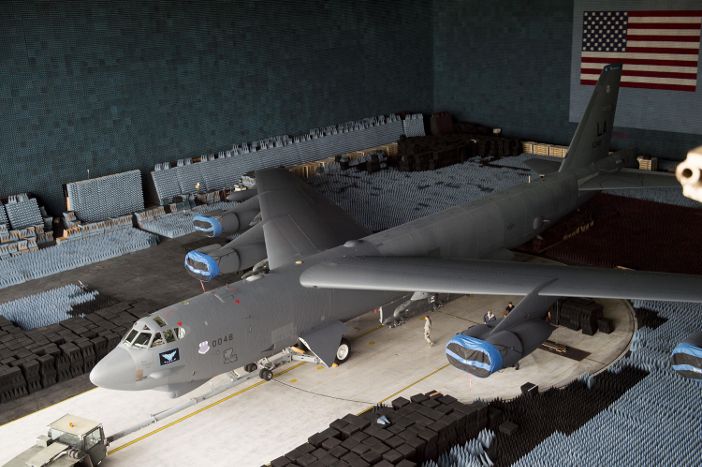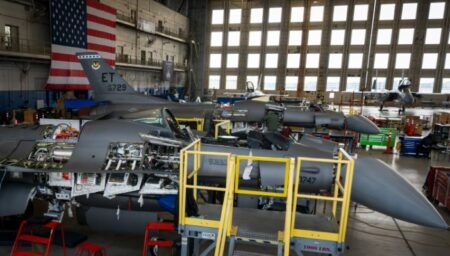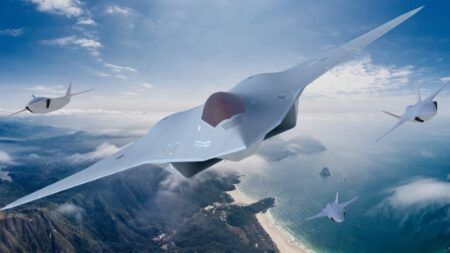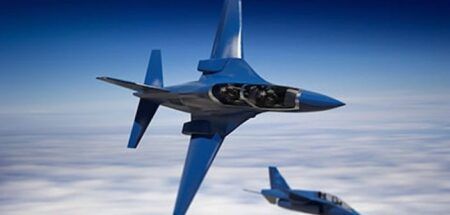A B-52 Stratofortress from the 96th Bomb Squadron at Barksdale Air Force Base, Louisiana, is undergoing hazards of electromagnetic radiation to ordnance (HERO) testing in the Benefield Anechoic Facility (BAF) at Edwards Air Force Base in California.
The test was requested by the B-52 Program Office at Tinker Air Force Base, Oklahoma, to comply with a recent mandate from the Air Force Safety Office according to members of the 772nd Test Squadron who oversee BAF operations. The mandate states all Air Force weapons platforms will conduct electromagnetic environmental effects evaluations. This test with the B-52 concentrated on the HERO element.
Ordnance and other devices that contain electro–explosive devices must function in their operational electromagnetic environment without inadvertently activating. To prevent the susceptibility of ordnance to radiated or conducted electromagnetic energy, HERO limits are imposed. HERO tests are conducted to classify the ordnance’s susceptibility to electromagnetic radiation as HERO Safe, HERO Susceptible, or HERO Unsafe.
“The advantage of using the BAF chamber is it allows for more sensitive measurements with low background noise levels, as compared to testing on the flightline where there are numerous interfering radio frequency sources,” said Hannah Dahlgren, 772nd TS project lead engineer. Since no signals escape the chamber, the customer does not have to deal with regulatory clearances to radiate from the aircraft, which typically results in transmitting late at night only to avoid interfering with flightline and commercial operations.”
The BAF at Edwards is the largest anechoic chamber in the world and can fit any airplane inside. It provides a ‘free space’ so electronic warfare tests can be conducted without radio frequency interference from the outside world. The chamber is filled with radiation-absorbing material (RAM), designed to stop reflections of electromagnetic waves. The size of the RAM, which is painted dark blue or black, varies depending on the particular frequency and test procedure being conducted. Aircraft systems can be tested and verified that they work properly in lieu of an actual flight test.
Dahlgren said the physical placement of the B-52 in the chamber was accomplished in four days. Once the jet was backed into the chamber, the bomber and the jack stands were placed on the turntable and rotated 180 degrees.
“There were no challenges relating to the size of the B-52. However, it was the first time a B-52 was jacked up within the BAF,” said Dahlgren.
A maintenance team from Minot Air Force Base, North Dakota, jacked the aircraft up and the landing gear was retracted to simulate in-flight conditions. Members of the 772nd TS placed the radiation-absorbing material around the aircraft along with pallets of ferrite tiles to absorb the various emitting frequencies from the aircraft.
Real ordnance is not needed during the testing because the BAF’s equipment can simulate real-life radio frequency and electromagnetic conditions; sensors can collect data from the areas where the B-52 would carry weapons.
February 1, 2017





